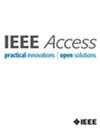MonoDFM: Density Field Modeling-Based End-to-End Monocular 3D Object Detection
IF 3.4
3区 计算机科学
Q2 COMPUTER SCIENCE, INFORMATION SYSTEMS
引用次数: 0
Abstract
Monocular 3D object detection aims to infer the 3D properties of objects from a single RGB image. Existing methods primarily rely on planar features to estimate 3D information directly. However, the limited 3D information available in 2D images often results in suboptimal detection accuracy. To address this challenge, we propose MonoDFM, an end-to-end monocular 3D object detection method based on density field modeling. By modeling the density field from the features of a single image, MonoDFM enables a more accurate transition from 2D to 3D representations, improving 3D attribute prediction accuracy. Unlike traditional depth map methods, which are limited to visible regions, MonoDFM infers geometric information from occluded regions by predicting the scene’s density field. Moreover, compared with more complex approaches like Neural Radiance Fields (NeRF), MonoDFM provides a streamlined and efficient prediction process. Experiments conducted on the KITTI dataset show that MonoDFM achieves基于密度场建模的端到端单目三维目标检测
单目三维目标检测旨在从单幅RGB图像中推断物体的三维属性。现有的方法主要依靠平面特征来直接估计三维信息。然而,2D图像中有限的3D信息往往导致检测精度不理想。为了解决这一挑战,我们提出了一种基于密度场建模的端到端单目3D目标检测方法MonoDFM。通过对单幅图像的特征进行密度场建模,MonoDFM可以更准确地从2D表示过渡到3D表示,从而提高3D属性预测的精度。与传统深度图方法局限于可见区域不同,MonoDFM通过预测场景的密度场,从被遮挡区域推断几何信息。此外,与神经辐射场(NeRF)等更复杂的方法相比,MonoDFM提供了一个简化和有效的预测过程。在KITTI数据集上进行的实验表明,MonoDFM在三种难度设置(简单、中等和困难)下,在KITTI基准上实现了$\ mathm {AP_{3D}}$的值(25.13,16.61,13.82)和$\ mathm {AP_{BEV}}$的值(32.61,22.14,18.71),取得了具有竞争力的性能。消融研究进一步验证了每个组成部分的有效性。因此,MonoDFM为单目3D物体检测提供了一种有效的方法,显示出较强的性能。
本文章由计算机程序翻译,如有差异,请以英文原文为准。
求助全文
约1分钟内获得全文
求助全文
来源期刊

IEEE Access
COMPUTER SCIENCE, INFORMATION SYSTEMSENGIN-ENGINEERING, ELECTRICAL & ELECTRONIC
CiteScore
9.80
自引率
7.70%
发文量
6673
审稿时长
6 weeks
期刊介绍:
IEEE Access® is a multidisciplinary, open access (OA), applications-oriented, all-electronic archival journal that continuously presents the results of original research or development across all of IEEE''s fields of interest.
IEEE Access will publish articles that are of high interest to readers, original, technically correct, and clearly presented. Supported by author publication charges (APC), its hallmarks are a rapid peer review and publication process with open access to all readers. Unlike IEEE''s traditional Transactions or Journals, reviews are "binary", in that reviewers will either Accept or Reject an article in the form it is submitted in order to achieve rapid turnaround. Especially encouraged are submissions on:
Multidisciplinary topics, or applications-oriented articles and negative results that do not fit within the scope of IEEE''s traditional journals.
Practical articles discussing new experiments or measurement techniques, interesting solutions to engineering.
Development of new or improved fabrication or manufacturing techniques.
Reviews or survey articles of new or evolving fields oriented to assist others in understanding the new area.
 求助内容:
求助内容: 应助结果提醒方式:
应助结果提醒方式:


